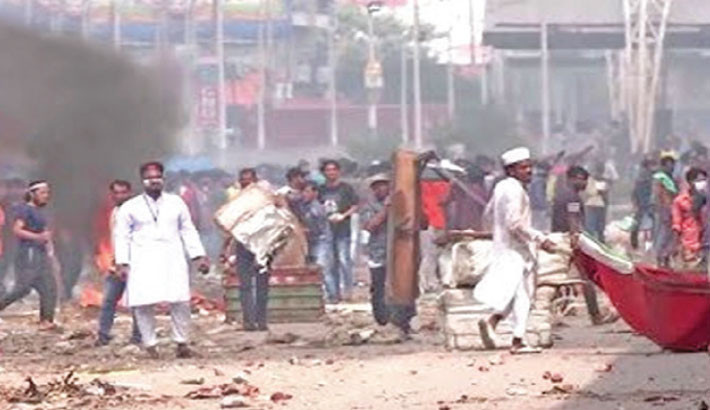
Nasirul Islam, 19, a student at Jatrabari Tamirul Millat Kamil Madrahsh, dreamed of becoming a doctor. But that dream was shattered on 20 July last year, when a bullet struck him during a protest against what demonstrators called the fascist Awami League government.
“My son had excellent results and big dreams. But a bullet ended it all,” his grieving father, Ashraful Islam, told the Daily Sun, fighting back tears. Nasirul was one of many madrasah students who faced relentless gunfire but refused to back down during the movement that demanded the resignation of prime minister Sheikh Hasina. According to witnesses, protesters and police sources, madrasah students were a dominant force in the uprising.
Around for eight days – 17-22 July and 3-5 August – the Jatrabari-Demra stretch of the Dhaka-Chattogram highway became a virtual battleground. Police sources said students from Qawmi and Alia madrasahs made up the largest contingent at the Jatrabari stronghold.
Their presence was also notable at other protest hubs across the capital, including Mohammadpur, Uttara and Mirpur.
Outside Dhaka, they played key roles in demonstrations in Chattogram, Chandpur, Brahmanbaria, Feni, Noakhali, Gazipur, Mymensingh, Netrokona and other districts.
Abul Kalam, a resident of Jatrabari, recalled witnessing three people being shot between 19 and 20 July.
“One was a madrasah student. I do not know if he survived. When the protests eased, police began harassing students. I saw two arrested right in front of me,” he said.
Various reports estimate that 70 to 80 Madrasah students lost their lives during the uprising. The Centre for Social Studies Foundation has released a partial list identifying 42 deceased students from both Qawmi and Alia institutions.
One of them was 19-year-old Shifat Ullah, a student of Jamiya Islami Emdadul Ulum Madrasah in Shreepur, Gazipur.
Shifat had no direct stake in the movement for government job quota reform.
He aspired to become a renowned Islamic speaker. But after witnessing what he believed was state brutality, he joined the protest, despite repeated warnings from his madrasah authorities.
He took to the streets on 5 August – the day then-prime minister Sheikh Hasina reportedly left for India. Shifat was shot during a demonstration at the 2 No C&B intersection in Shreepur.
He was rushed to Al Hera Medical Centre in Mauna, where he was pronounced dead.
The Centre for Social Studies Foundation attributed his death to bullets allegedly fired by the Border Guard Bangladesh (BGB).
Shifat was the son of Hafez Maulana Nuruzzaman and Kamrunnahar of Charkawla, Muniarikanda, in Pakundia upazila of Kishoreganj.
Maulana Sohrab Ali, principal of Shifat’s Madrasah, described him as humble and deeply committed.
“He wanted to be a Maulana and a respected Islamic orator. We had asked students not to join the movement out of fear, but Shifat went anyway, driven by solidarity.”
Mufassir-e-Quran Maulana Khalid Saifullah Ayyubi said the Anti-Discrimination Student Movement, which evolved into the mass upsurge, initially demanded reform of the public job quota system.
“Qawmi students have little to gain from such reforms, as most do not seek government jobs. Their aspirations lie in becoming imams, teachers or small entrepreneurs. Yet they stood beside university and college students and faced bullets,” he said.
Kazi Abdullah Al Mamun, a teacher at Tanzimul Ummah Alim Madrasah in Uttara, said law enforcement raided the institution during the protests, arresting six teachers, including himself, and several students.
“We were tortured and imprisoned for 17 days. We were only released on 6 August,” he said.

